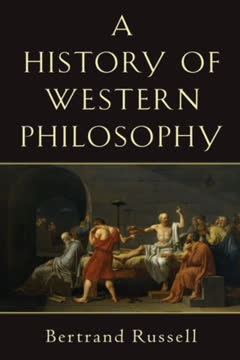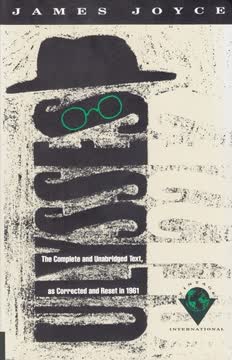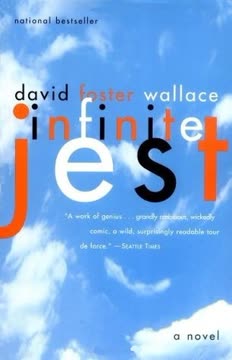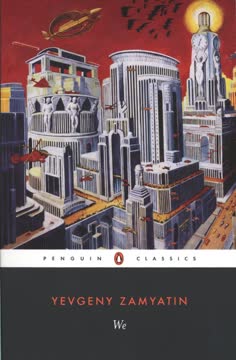نکات کلیدی
1. تفسیر رقصی میان متن و خواننده است
حدود تفسیر با حقوق متن همپوشانی دارد (که به معنای حقوق نویسنده نیست).
دیالکتیک حقوق. تفسیر یک فرایند آزاد نیست؛ بلکه یک مذاکره میان ساختار ذاتی متن و مشارکت فعال خواننده است. متن دارای "حقوق" خاص خود است که مرزهایی را برای آنچه میتوان بهطور منطقی استنباط کرد، تعیین میکند، در حالی که خواننده حق دارد به کاوش در معانی بالقوه آن بپردازد. این تعادل از تفسیرهای سختگیرانه و متمرکز بر نویسنده و همچنین تفسیرهای بینظم و متمرکز بر خواننده جلوگیری میکند.
مشارکت فعال. خوانندگان تنها دریافتکنندگان منفعل معنا نیستند؛ بلکه آن را از طریق تجربیات، دانش و دیدگاههای خود بهطور فعال میسازند. این نقش فعال برای درک پتانسیل متن حیاتی است، اما باید تحت هدایت محدودیتهای خود متن باشد. آزادی خواننده مطلق نیست، بلکه آزادی در چارچوب متن است.
فراتر از نیت نویسنده. در حالی که نیت نویسنده یک عامل است، اما تنها تعیینکننده معنای متن نیست. متن، پس از خلق، زندگی خود را بهدست میآورد و قادر به تولید تفسیرهایی است که نویسنده ممکن است پیشبینی نکرده باشد. "حقوق" متن حقوق نویسنده نیست، بلکه حقوق متن بهعنوان یک شیء نشانهشناختی است.
2. نمادها محدود به زمینه هستند، نه بینهایت باز
متنها راه انسانی برای کاهش جهان به فرمت قابل مدیریت هستند که به یک گفتمان تفسیر بینفردی باز است.
نماد در مقابل تمثیل. نمادها، بر خلاف تمثیلها، معانی ثابت و یکبهیک ندارند. آنها دامنهای از تداعیها و تفسیرها را برمیانگیزند، اما این دامنه بینهایت نیست. زمینهای که یک نماد در آن ظاهر میشود، معانی بالقوه آن را محدود میکند و از تبدیل آن به یک نشانه آزاد جلوگیری میکند.
لنگرهای متنی. نمادها، زمانی که در یک متن قرار میگیرند، توسط زمینه خود لنگر میشوند. این زمینه چارچوبی برای تفسیر فراهم میکند و خواننده را به سمت معانی خاصی هدایت میکند و از دیگر معانی دور میکند. متن بهعنوان یک فیلتر عمل میکند و امکانات بینهایت یک نماد را به مجموعهای قابل مدیریت از تفسیرها کاهش میدهد.
پارادایم در مقابل سینتگم. نمادها بهطور پارادایمی به معانی بینهایت باز هستند، اما از نظر سینتگمی یا متنی، تنها به تفسیرهای نامعین مجاز توسط زمینه باز هستند. این بدان معناست که در حالی که یک نماد ممکن است معانی بالقوه زیادی داشته باشد، معنای واقعی آن در یک متن به رابطهاش با دیگر عناصر آن متن محدود است.
3. سمiosis نامحدود به معنای تفسیر بیضابطه نیست
گفتن اینکه تفسیر (بهعنوان ویژگی اساسی سمiosis) بهطور بالقوه نامحدود است، به این معنا نیست که تفسیر هیچ موضوعی ندارد و برای خود بهطور صرف "جاری" میشود.
سمیوسیس پیرس. ایده سمiosis نامحدود، جایی که یک نشانه به نشانه دیگری در زنجیرهای بیپایان از تفسیر منجر میشود، به این معنا نیست که تفسیر دلخواه یا بدون معیار است. این بدان معناست که فرایند تفسیر در حال انجام و بهطور بالقوه بینهایت است، اما هنوز هم تحت هدایت موضوع تفسیر قرار دارد.
دانستن بیشتر. در سمیوسیس پیرس، هر تفسیرکننده به درک ما از نشانه اصلی میافزاید. این فرایند یک انحراف تصادفی نیست، بلکه یک تقریب پیشرفته به تفسیر منطقی نهایی است. هدف این است که بیشتر درباره نشانه بدانیم، نه فقط اینکه چیزی دیگر را بدانیم.
مربوط بودن به زمینه. سمiosis از نظر سیستم بهطور بالقوه نامحدود است، اما از نظر فرایند اینگونه نیست. در طول یک فرایند سمiosis، ما میخواهیم تنها آنچه را که بر اساس یک جهان گفتمانی خاص مرتبط است، بدانیم. این بدان معناست که تفسیر همیشه تحت هدایت یک هدف و زمینه خاص است.
4. معنای لغوی نقطه شروع ضروری است
هر عمل آزادی از سوی خواننده میتواند پس از پذیرش آن محدودیت، نه قبل از آن، انجام شود.
تعاریف دیکشنری. قبل از هر عمل تفسیر، باید پذیرش معنای لغوی کلمات، بهعنوان تعریف شده توسط دیکشنریها و استفادههای رایج، وجود داشته باشد. این معنای لغوی بهعنوان پایهای عمل میکند که بر اساس آن تفسیرهای بیشتری میتوان ساخت.
معنای صفر درجه. معنای لغوی "معنای صفر درجه" است، معنایی که هر عضو یک جامعه زبانی ابتدا آن را تعریف میکند. این پایهای است که از آن همه تفسیرهای دیگر انحراف میکنند. بدون این پایه، هیچ راهی برای شناسایی معانی مجازی یا استعاری وجود نخواهد داشت.
آزادی خواننده. آزادی خواننده برای تفسیر یک متن پس از پذیرش معنای لغوی، نه قبل از آن، بهدست میآید. این بدان معناست که هر عمل خواندن خلاق باید بر اساس درک مشترک از محتوای معنایی پایه متن قرار گیرد. آزادی خواننده مجوزی برای نادیده گرفتن ساختار ذاتی متن نیست.
5. متنها خوانندگان را راهنمایی میکنند، نه اینکه آنها را دیکته کنند
حدود تفسیر با حقوق متن همپوشانی دارد (که به معنای حقوق نویسنده نیست).
خواننده مدل. متنها بهگونهای طراحی شدهاند که نوع خاصی از خواننده، "خواننده مدل"، را برانگیزند که قادر به درک معانی مورد نظر متن و درگیر شدن با پیچیدگیهای آن است. این خواننده یک شخص واقعی نیست، بلکه یک ساختار متنی است، مجموعهای از شایستگیها و انتظاراتی که خود متن تعریف میکند.
همکاری تفسیر. رابطه میان متن و خواننده یک رابطه همکاری است، نه دیکته. متن دستورالعملها و نشانههایی را فراهم میکند، اما خواننده باید بهطور فعال در فرایند ساخت معنا شرکت کند. این همکاری یک فرایند پویا است که در آن انتخابهای خواننده تحت هدایت ساختار متن قرار دارد.
محدودیتهای متنی. در حالی که متنها دعوت به تفسیرهای متعدد میکنند، همچنین محدودیتهایی را بر آنچه میتوان بهطور منطقی استنباط کرد، تحمیل میکنند. این محدودیتها بهمنظور محدود کردن آزادی خواننده نیستند، بلکه برای اطمینان از اینکه تفسیر در ساختار ذاتی متن ریشهدار باقی بماند، طراحی شدهاند. متن یک صفحه خالی نیست، بلکه یک سیستم ساختاریافته است که سفر خواننده را راهنمایی میکند.
6. انحراف هرمتیک نامحدود سمiosis نیست
یک نشانه چیزی است که با دانستن آن، ما چیز بیشتری میدانیم.
انحراف هرمتیک. انحراف هرمتیک یک عادت تفسیر است که بر اساس تشابه و همدلی جهانی است، جایی که همه چیز از طریق شباهتها به یکدیگر متصل است. این رویکرد منجر به جابجایی کنترلنشده از معنایی به معنای دیگر میشود، جایی که محتوای نهایی هر بیان یک راز خالی است.
سمیوسیس پیرس. در مقابل، سمیوسیس پیرس یک فرایند تعیین پیشرفته است، جایی که هر تفسیرکننده به درک ما از نشانه اصلی میافزاید. این فرایند دانستن بیشتر است، نه فقط دانستن چیزی دیگر. هدف نزدیک شدن به تفسیر منطقی نهایی است، نه اینکه بهطور بیپایان معنای آن را به تأخیر بیندازیم.
نئوپلاسم کنوتاتیو. انحراف هرمتیک میتواند بهعنوان یک نوع نئوپلاسم کنوتاتیو دیده شود، جایی که تداعیها بدون هیچ محدودیت زمینهای گسترش مییابند. این منجر به پدیدهای میشود که محتوای نشانه جدید دیگر به محتوای نشانه اول وابسته نیست. سمیوسیس پیرس، از سوی دیگر، یک فرایند رشد است که در آن هر تفسیرکننده جدید بر اساس تفسیرکننده قبلی ساخته میشود.
7. جهانهای داستانی کوچک هستند، نه بینهایت
جهان ممکن داستانی مجموعهای از توصیفهای زبانی است که خوانندگان باید آنها را بهعنوان اشاره به یک وضعیت ممکن تفسیر کنند که اگر p درست باشد، آنگاه غیر-p نادرست است.
جهانهای مبله. جهانهای داستانی مجموعههای خالی نیستند، بلکه وضعیتهای مبله و غیرخالی هستند که توسط افرادی با ویژگیهای خاص و تحت قوانین معین اداره میشوند. این جهانها ساختارهای فرهنگی هستند که از طریق توصیفهای زبانی ایجاد شده و توسط خوانندگان تفسیر میشوند.
جهانهای کوچک. جهانهای داستانی همیشه "جهانهای کوچک" هستند که مجموعهای محدود از رویدادها و شخصیتها را در یک زمینه خاص نمایندگی میکنند. آنها بهمنظور ارائه نمایشی کامل یا جامع از واقعیت طراحی نشدهاند، بلکه بهعنوان کاوشهای متمرکز در موضوعات و ایدههای خاص عمل میکنند.
ناقص و ناهمگن. جهانهای داستانی اغلب ناقص و از نظر معنایی ناهمگن هستند و بسیاری از جزئیات مشخص نشدهاند. از خوانندگان انتظار میرود که با استفاده از دانش و تخیل خود، شکافها را پر کنند، اما این فرایند همیشه تحت هدایت ساختار ذاتی متن است. متن چارچوبی را فراهم میکند، اما خواننده باید بهطور فعال در ساخت جهان شرکت کند.
آخرین بهروزرسانی::
FAQ
What's The Limits of Interpretation about?
- Exploration of Interpretation: Umberto Eco's The Limits of Interpretation examines the complexities of interpreting texts, particularly in literature and semiotics. It highlights the multiplicity of meanings that can be derived from a single text.
- Reader-Response Criticism: The book discusses how the meaning of a text is shaped not only by the author but also by the reader's interpretation, emphasizing the active role of the reader in meaning-making.
- Semiotic Framework: Eco uses a semiotic framework to analyze how signs and symbols function within texts, arguing that understanding these relationships is crucial for interpretation.
Why should I read The Limits of Interpretation?
- Insightful Analysis: The book offers a profound analysis of interpretation, challenging conventional views on meaning and authorship, making it essential for literature and philosophy enthusiasts.
- Interdisciplinary Approach: Eco bridges various fields, including linguistics and literary theory, providing a comprehensive understanding of how texts operate.
- Critical Thinking: It encourages readers to think critically about how they engage with texts and the implications of their interpretations.
What are the key takeaways of The Limits of Interpretation?
- Unlimited Semiosis: Eco introduces the concept of unlimited semiosis, suggesting that interpretation can continue indefinitely without reaching a final meaning.
- Constraints of Interpretation: Despite potential for unlimited interpretations, texts impose constraints based on structure, context, and authorial intent.
- Role of the Reader: The reader plays an active role in constructing meaning, but interpretations must remain grounded in the text.
What are the best quotes from The Limits of Interpretation and what do they mean?
- "Language always says more...": This quote highlights that texts carry layers of meaning beyond their surface interpretation, urging readers to engage deeply.
- "The limits of interpretation...": Eco emphasizes the balance between reader freedom and respecting the text's inherent constraints.
- "Even the most radical deconstructionists...": This quote underscores the necessity of grounding interpretations in the text itself, reminding that not all readings are valid.
How does Eco define "unlimited semiosis" in The Limits of Interpretation?
- Concept of Unlimited Semiosis: Eco defines it as the idea that interpretation can continue indefinitely, challenging traditional notions of fixed meanings.
- Implications for Interpretation: Every interpretation can lead to further interpretations, creating a chain of meanings that evolve over time.
- Textual Constraints: Despite potential for unlimited interpretations, texts impose constraints that guide understanding, maintaining connection to original intent.
What is Eco's view on reader-response criticism in The Limits of Interpretation?
- Active Reader Engagement: Eco acknowledges the reader's role in interpreting texts, arguing that readers actively construct meaning based on their experiences.
- Limits to Interpretation: While supporting reader involvement, Eco stresses that texts impose limits on interpretation through structure and context.
- Dialectical Relationship: He presents a dynamic relationship between text and reader, allowing for multiple readings while maintaining a connection to the text.
How does Eco address the relationship between authorial intent and interpretation?
- Authorial Intent: Eco acknowledges its significance in shaping a text's meaning but argues that once published, meaning is not solely determined by the author.
- Reader's Interpretation: Readers bring their interpretations, which can diverge from the author's original intent, highlighting the collaborative nature of meaning-making.
- Balancing Act: Eco advocates for balancing respect for authorial intent with allowing reader interpretations for a comprehensive understanding.
What is the significance of the "limits of interpretation" in Eco's work?
- Defining Boundaries: The "limits of interpretation" refer to boundaries that texts impose on understanding, ensuring interpretations remain grounded in the text.
- Respecting Textual Integrity: This concept emphasizes respecting the text's integrity while engaging in interpretation, reminding that not all readings are valid.
- Framework for Analysis: It provides a framework for analyzing texts, guiding readers to consider both the text's structure and their interpretive choices.
How does Eco's The Limits of Interpretation contribute to semiotics?
- Foundation for Semiotic Theory: Eco's work lays a foundation for understanding the relationship between signs and meanings within texts.
- Interdisciplinary Connections: The book connects semiotics with literary theory, linguistics, and philosophy, broadening the scope of semiotic studies.
- Influence on Future Research: Eco's insights have influenced subsequent research, prompting scholars to explore complexities of meaning-making in various contexts.
What is Eco's definition of a "Model Reader" in The Limits of Interpretation?
- Reader's Role: The Model Reader is an idealized reader who aligns with the author's intentions while bringing their own interpretations.
- Infinite Conjectures: This reader explores various interpretations within the bounds of what the text can convey, encouraging creativity while staying anchored in content.
- Cultural Context: The Model Reader's background and cultural context shape their understanding, making the reading experience unique.
How does Eco differentiate between "semantics" and "pragmatics" in The Limits of Interpretation?
- Semantics Defined: Eco describes semantics as the study of meaning within a sign system, focusing on how signs relate to what they denote.
- Pragmatics Defined: Pragmatics examines how context influences interpretation, including speaker intentions and situational factors.
- Interrelation: Eco argues that semantics and pragmatics are interdependent, requiring both for understanding a text.
What is the relationship between "text" and "context" in Eco's analysis?
- Textual Coherence: Eco argues that a text must be understood in relation to its context, which includes cultural, historical, and situational factors.
- Dynamic Interaction: The relationship is dynamic; while the text conveys meanings, context can alter or enhance them based on interpretation.
- Interpretive Strategies: Effective interpretation requires awareness of both the text's internal structure and external context, allowing meaningful engagement.
نقد و بررسی
کتاب مرزهای تفسیر مجموعهای از مقالات است که به بررسی حدود تفسیر متون میپردازد. خوانندگان از دفاع اکو از قصد متن (intentio operis) و رد تفسیر نامحدود او قدردانی میکنند. این کتاب به خاطر عمق فکری و سبک نوشتاری سرگرمکنندهی اکو مورد تحسین قرار گرفته است. برخی آن را به دلیل ماهیت دانشگاهی و واژگان تخصصیاش چالشبرانگیز مییابند. منتقدان اشاره میکنند که اکو از سنتهای فلسفی مختلف و نشانهشناسی برای توسعهی استدلالهای خود بهره میبرد. در حالی که برخی مقالات از دیگران قابل دسترستر هستند، این اثر بهطور کلی در زمینهی هرمنوتیک و نظریهی ادبی از اهمیت بالایی برخوردار است.















